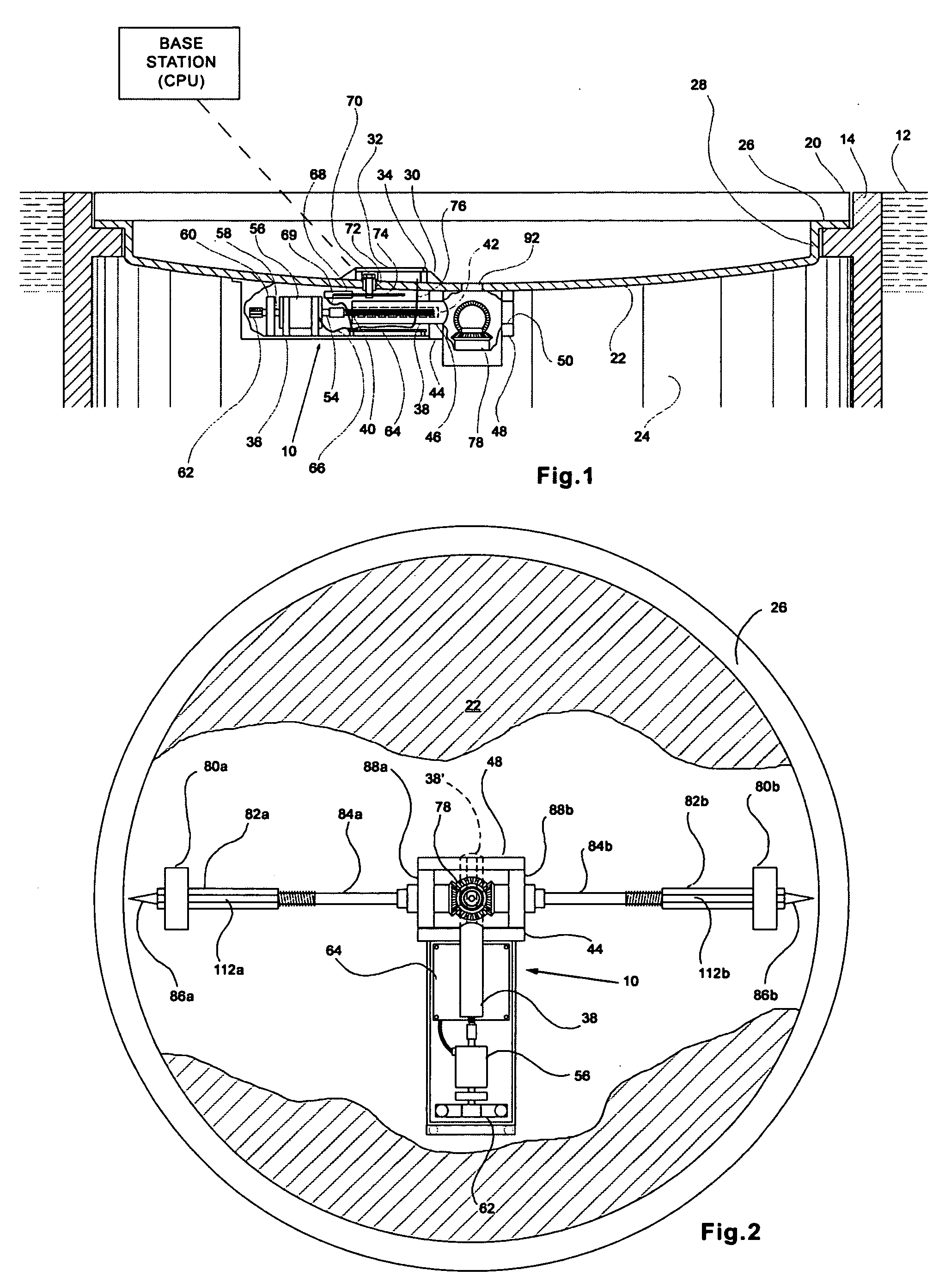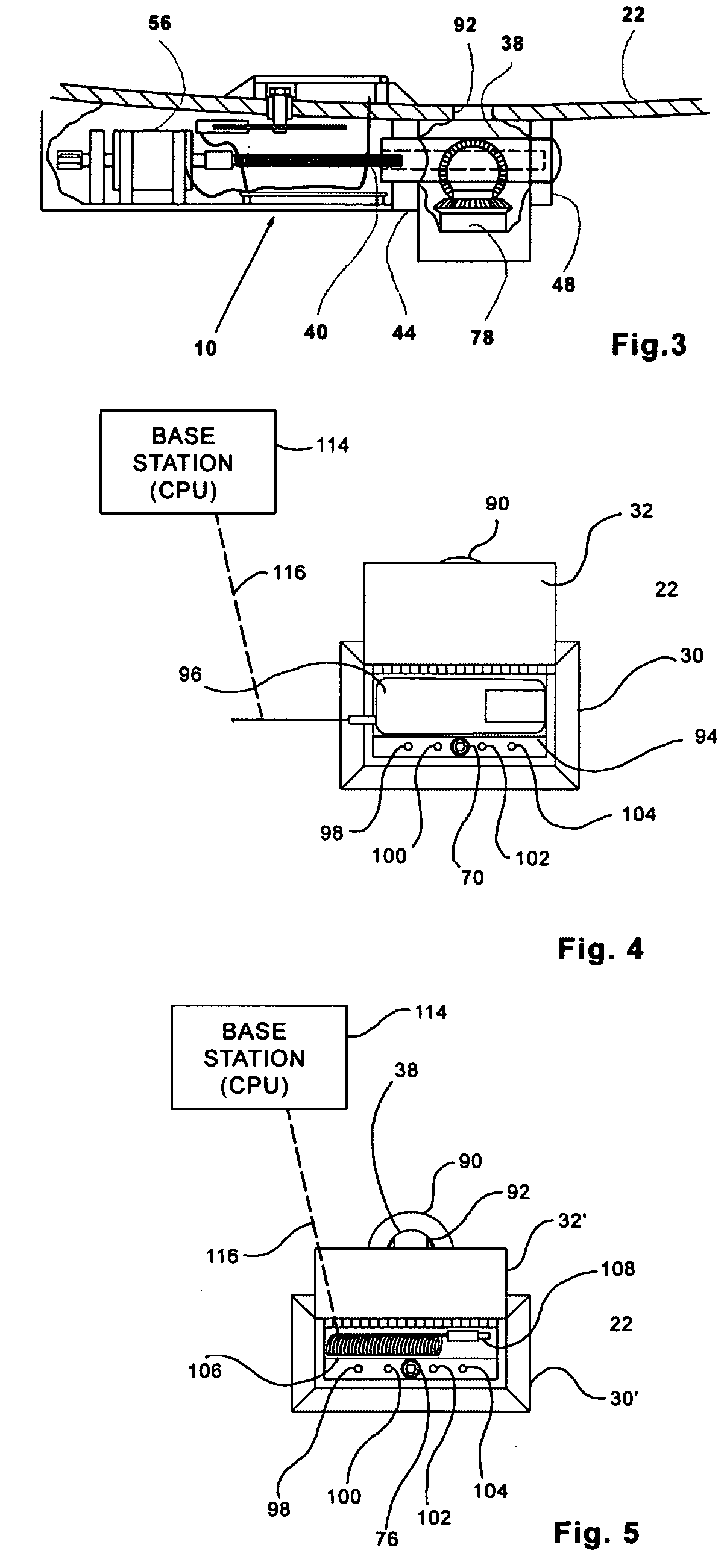Electronic wireless locking system
a wireless locking and wireless technology, applied in the field of electronic wireless locking systems, can solve the problems of chain breaking, cheap locks negating the security effectiveness of all high-quality locks, and people needing access to facilities, etc., and achieve the effect of high volume usag
- Summary
- Abstract
- Description
- Claims
- Application Information
AI Technical Summary
Benefits of technology
Problems solved by technology
Method used
Image
Examples
Embodiment Construction
[0035] The invention is capable of numerous iterations and applications. One embodiment of the invention will be focused on to make the reader aware of the general principles of the invention. A perusal of the drawing figures while carefully reading this specification will provide the reader with an appreciation of the embodiments described, as well as embodiments that are logical extensions of those set forth herein.
[0036] The preferred embodiments of the invention presented here are described below in the drawing figures and Detailed Description of the Drawings. Unless specifically noted, it is intended that the words and phrases in the specification and the claims be given the ordinary and accustomed meaning to those of ordinary skill in the applicable arts. If any other special meaning is intended for any word or phrase, the specification will clearly state and define the special meaning.
[0037] Beginning with FIG. 1, an overview of one embodiment of the invention can be clearl...
PUM
 Login to View More
Login to View More Abstract
Description
Claims
Application Information
 Login to View More
Login to View More - R&D
- Intellectual Property
- Life Sciences
- Materials
- Tech Scout
- Unparalleled Data Quality
- Higher Quality Content
- 60% Fewer Hallucinations
Browse by: Latest US Patents, China's latest patents, Technical Efficacy Thesaurus, Application Domain, Technology Topic, Popular Technical Reports.
© 2025 PatSnap. All rights reserved.Legal|Privacy policy|Modern Slavery Act Transparency Statement|Sitemap|About US| Contact US: help@patsnap.com



